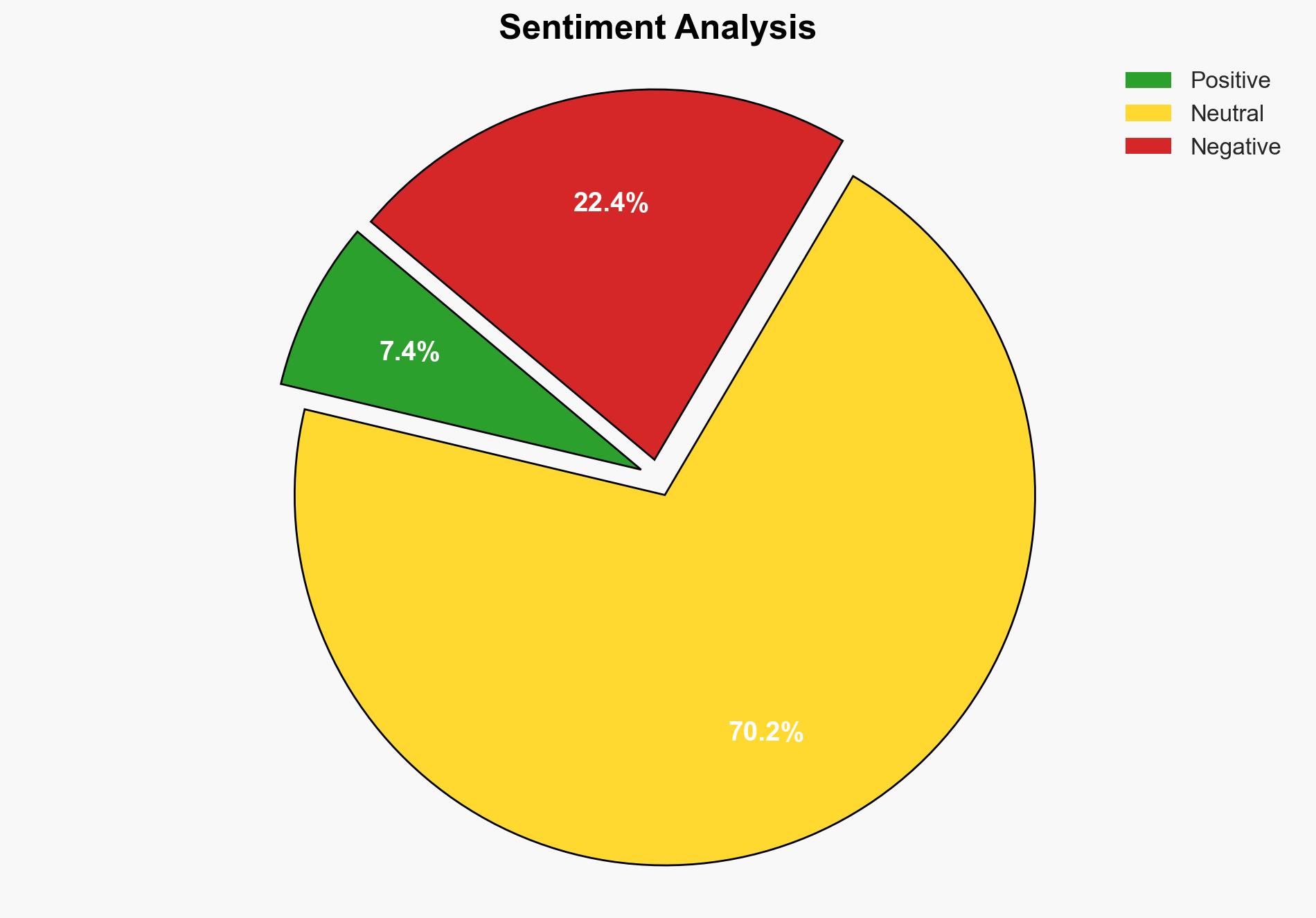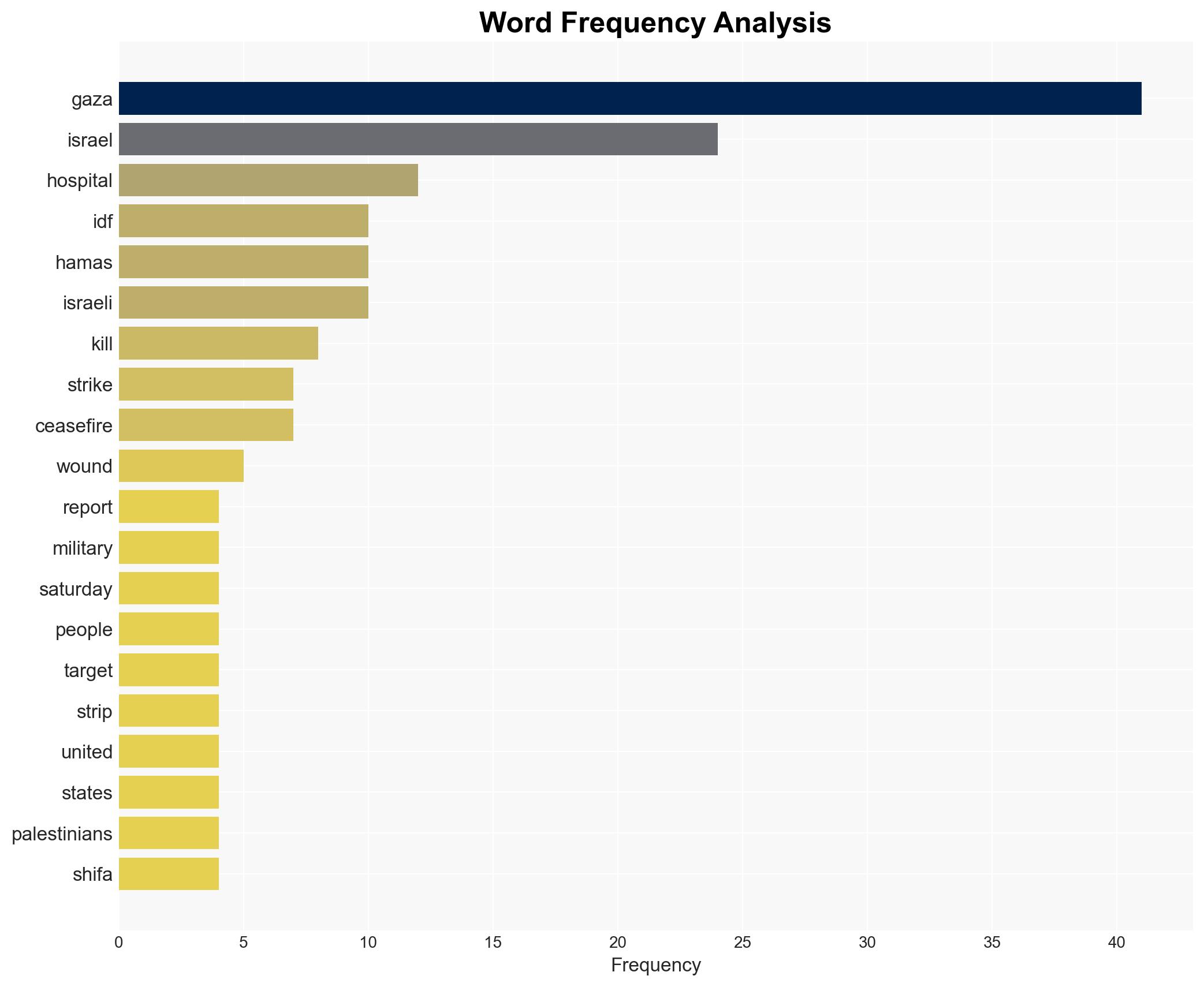Israel launches strikes in Gaza after reported attacks against IDF troops
Published on: 2025-11-22
AI-powered OSINT brief from verified open sources. Automated NLP signal extraction with human verification. See our Methodology and Why WorldWideWatchers.
Intelligence Report:
1. BLUF (Bottom Line Up Front)
The most supported hypothesis is that the recent Israeli airstrikes in Gaza are a direct response to perceived violations of the ceasefire by Hamas, aiming to re-establish deterrence and prevent future incursions. Confidence level: Moderate. Recommended action: Engage in diplomatic efforts to reinforce the ceasefire terms and prevent further escalation.
2. Competing Hypotheses
Hypothesis 1: The Israeli airstrikes are a calculated response to a direct violation of the ceasefire by Hamas, intended to reassert military deterrence and prevent further attacks.
Hypothesis 2: The airstrikes are part of a broader Israeli strategy to undermine Hamas’s position in Gaza, leveraging the ceasefire violations as a pretext for military action.
Assessment: Hypothesis 1 is more likely given the immediate context of reported attacks on IDF troops and the historical pattern of Israeli responses to ceasefire violations. Hypothesis 2, while plausible, lacks direct evidence of a broader strategic shift at this time.
3. Key Assumptions and Red Flags
Assumptions: The ceasefire terms are clearly defined and understood by both parties; Hamas’s actions were intentional violations.
Red Flags: Potential bias in reporting from both Israeli and Palestinian sources; lack of independent verification of events on the ground.
Deception Indicators: Conflicting statements from Hamas and Israeli officials regarding the ceasefire terms and violations.
4. Implications and Strategic Risks
The continuation of hostilities risks further destabilizing the region, potentially drawing in external actors and complicating diplomatic efforts. Escalation could lead to increased civilian casualties, humanitarian crises, and damage to critical infrastructure. Politically, this may strain Israel’s relations with key allies and impact regional alliances.
5. Recommendations and Outlook
- Engage in multilateral diplomatic efforts to reaffirm and clarify the ceasefire terms, involving key stakeholders such as the United States and regional powers.
- Enhance intelligence-sharing mechanisms to improve situational awareness and reduce the risk of miscalculation.
- Best-case scenario: Successful diplomatic intervention leads to a reinforced ceasefire and reduced hostilities.
- Worst-case scenario: Escalation into a broader conflict involving regional actors.
- Most-likely scenario: Continued sporadic hostilities with intermittent diplomatic efforts to stabilize the situation.
6. Key Individuals and Entities
Rami Mhanna, Mohamed Abu Selmiya, Israel Defense Forces (IDF), Hamas.
7. Thematic Tags
Regional Focus, Middle East, Israel-Palestine Conflict, Ceasefire Violations, Military Strategy, Regional Stability
Structured Analytic Techniques Applied
- Causal Layered Analysis (CLA): Analyze events across surface happenings, systems, worldviews, and myths.
- Cross-Impact Simulation: Model ripple effects across neighboring states, conflicts, or economic dependencies.
- Scenario Generation: Explore divergent futures under varying assumptions to identify plausible paths.
Explore more:
Regional Focus Briefs ·
Daily Summary ·
Support us





